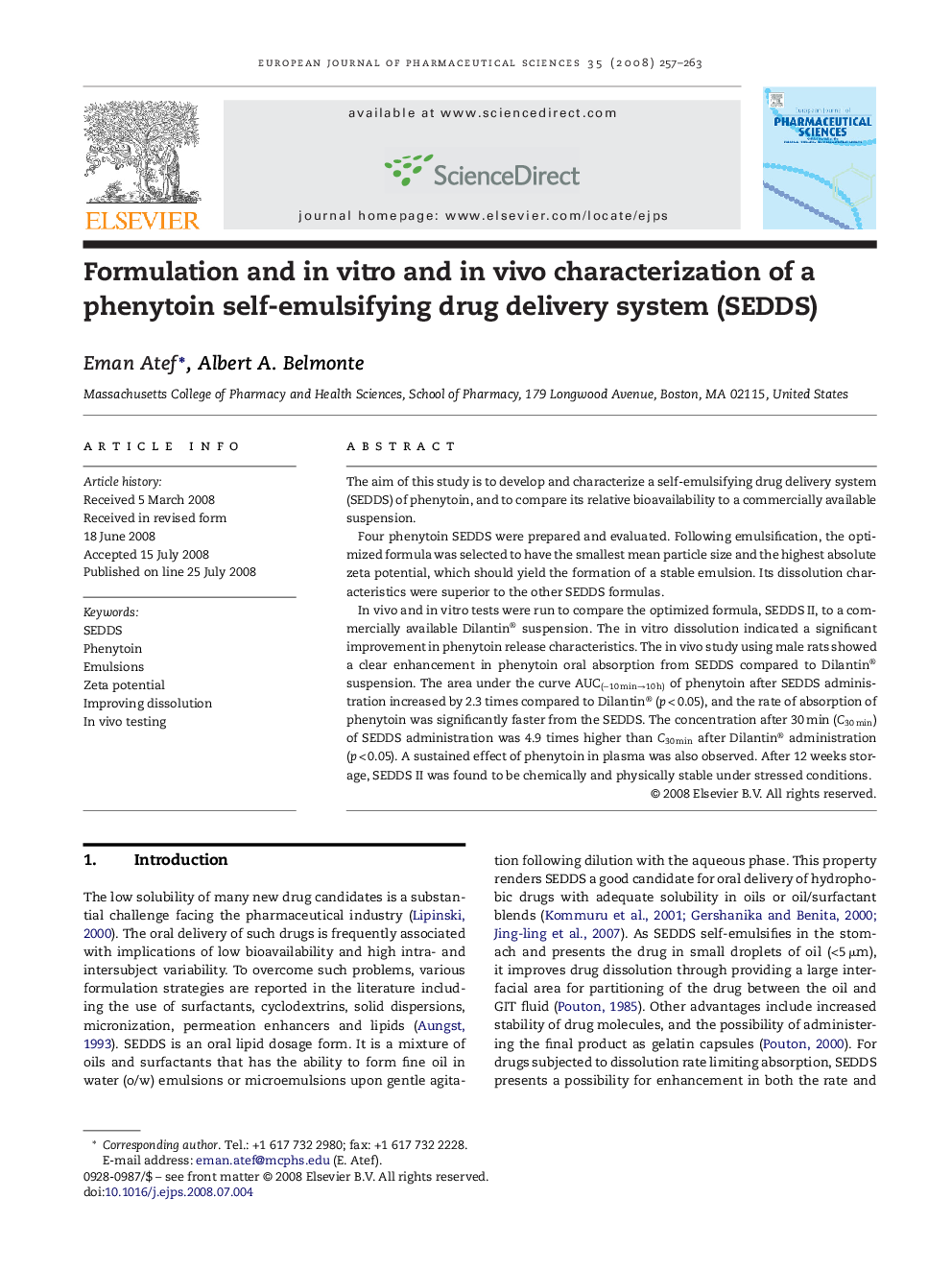| Article ID | Journal | Published Year | Pages | File Type |
|---|---|---|---|---|
| 2482389 | European Journal of Pharmaceutical Sciences | 2008 | 7 Pages |
The aim of this study is to develop and characterize a self-emulsifying drug delivery system (SEDDS) of phenytoin, and to compare its relative bioavailability to a commercially available suspension.Four phenytoin SEDDS were prepared and evaluated. Following emulsification, the optimized formula was selected to have the smallest mean particle size and the highest absolute zeta potential, which should yield the formation of a stable emulsion. Its dissolution characteristics were superior to the other SEDDS formulas.In vivo and in vitro tests were run to compare the optimized formula, SEDDS II, to a commercially available Dilantin® suspension. The in vitro dissolution indicated a significant improvement in phenytoin release characteristics. The in vivo study using male rats showed a clear enhancement in phenytoin oral absorption from SEDDS compared to Dilantin® suspension. The area under the curve AUC(−10 min→10 h) of phenytoin after SEDDS administration increased by 2.3 times compared to Dilantin® (p < 0.05), and the rate of absorption of phenytoin was significantly faster from the SEDDS. The concentration after 30 min (C30 min) of SEDDS administration was 4.9 times higher than C30 min after Dilantin® administration (p < 0.05). A sustained effect of phenytoin in plasma was also observed. After 12 weeks storage, SEDDS II was found to be chemically and physically stable under stressed conditions.
